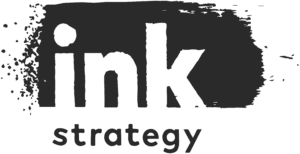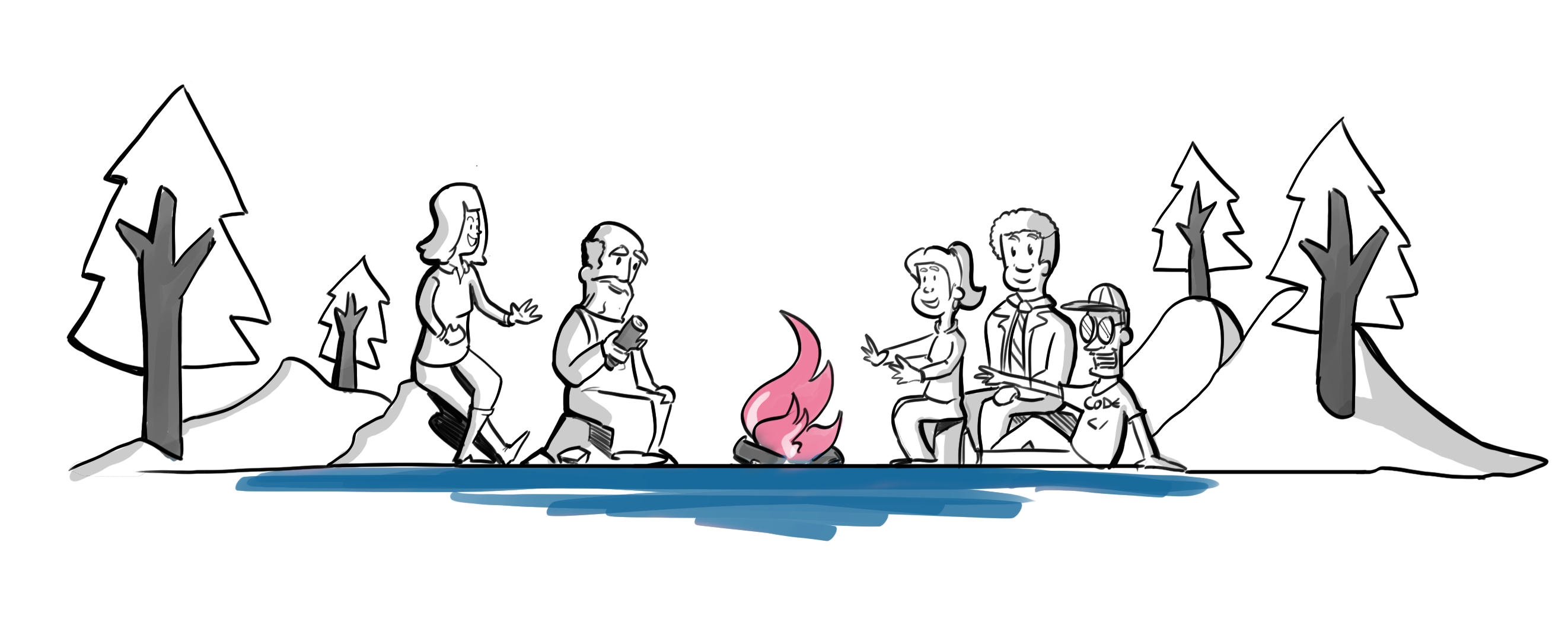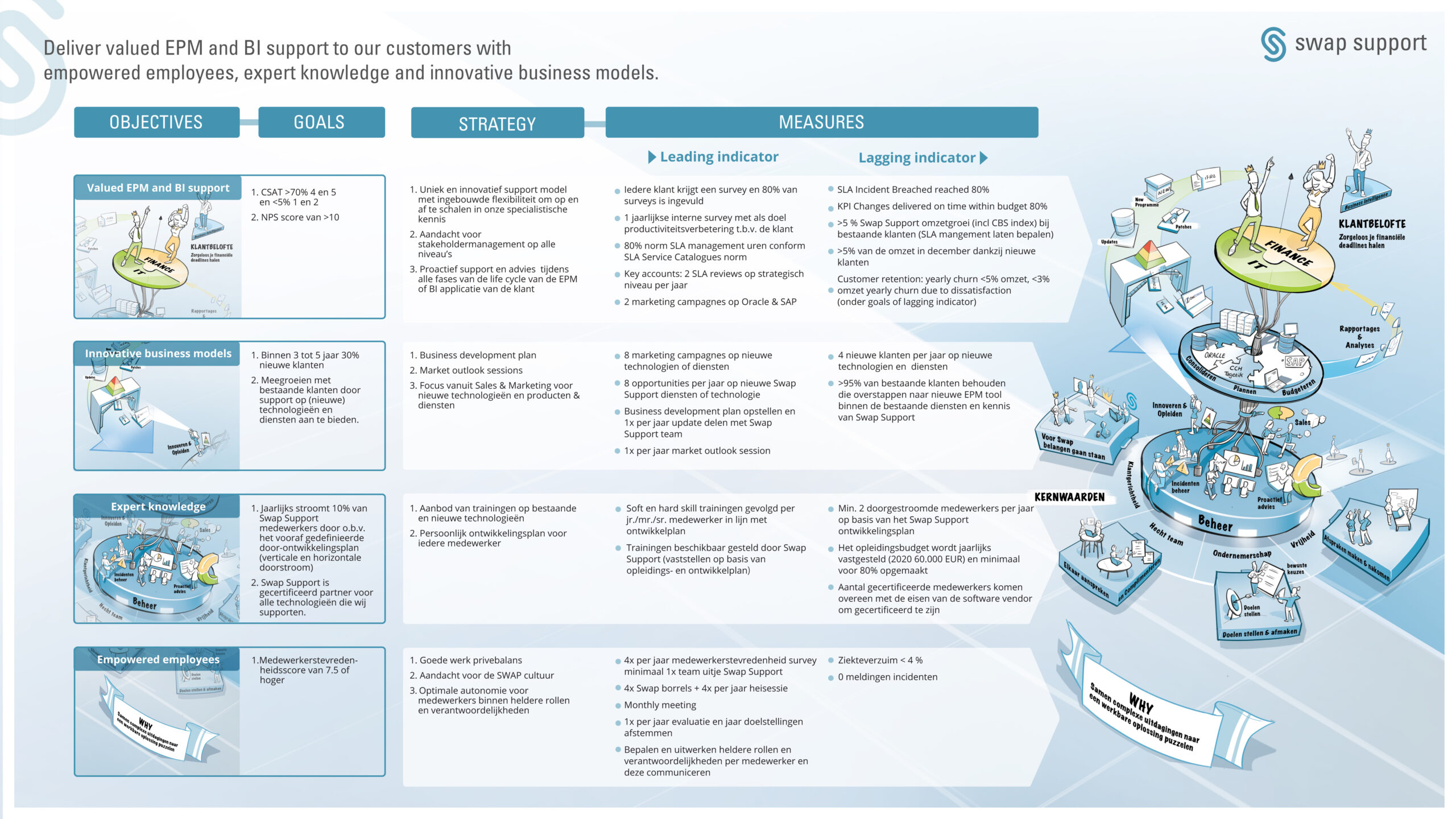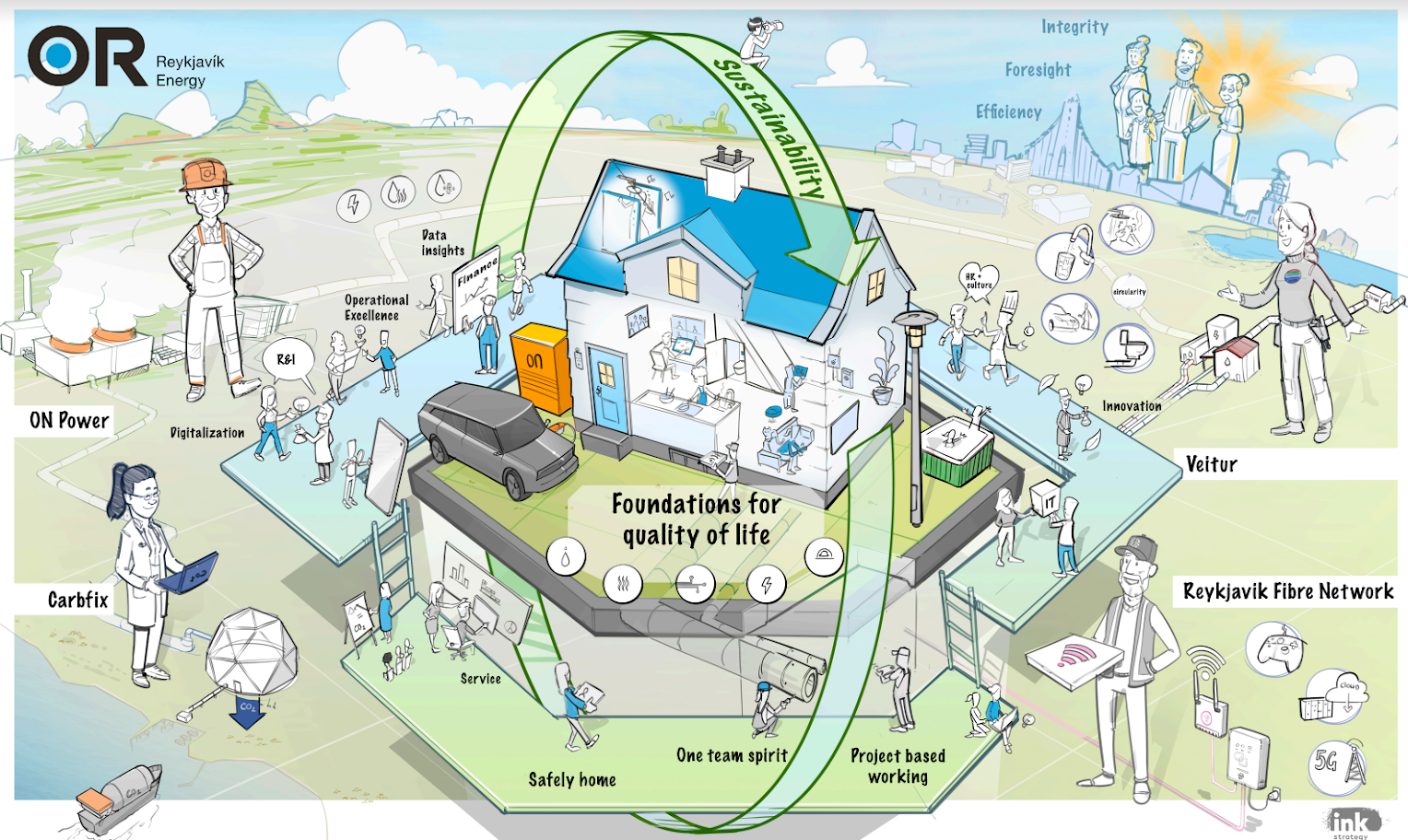Everything you need to know about storytelling to make your story stick.
For most of us, work has become a centerpiece of our personality. What work we do is often who we think we are. No wonder then, we want our jobs to be fulfilling and try to choose our jobs wisely. When we do find a place we want to work and get the job we’ll be challenged on a daily basis with this question: how to balance our wish for organizational success with our deeper, personal passions?
Taking the perspective of the organization, there are similar questions at play. Traditionally experts in strategic planning and control, organizations are now challenged to become more adaptive and creative towards the ever-changing market. In order to survive, they need their workforce not just to carry out prescribed tasks, but to bring creative engagement and constant change towards the work floor as well.
Both strategy and more soulful qualities like passion and creativity are vital to personal and organizational success. The question is how to strike the right balance between these qualities. In the following paragraphs, I argue that a shared vision is crucial to striking a balance and provide guidance on 1) how to construct a good vision and 2) how to build a vision-driven organization.
As much as this text shows my own ideas and convictions, it also gives insight in my work at Ink Strategy. Our mission at Ink is to playfully guide people towards a bright future. The best way to do this – in our humble opinion – is to help our clients become vision-driven organizations.
Personal perspective – A sense of belonging
There are moments in our lives we feel we truly belong. I can feel like that when I’m out in nature. When I feel the warmth of the sun and the soft brush of the wind on my skin. When the promise of spring is in the air and I can see all the way towards the horizon. Just as much though, I can get this feeling of belonging when facilitating a group of people towards greater openness, towards a reconnection with their passion and finding ways to live that passion through their work. It’s these moments that drive out the tension in my body, turn me soft in the warm sense of the word, receptive and powerful.
Work as a catalyst of finding your own way
Our work life brings with it tremendous challenges to find and retain the sense of belonging I describe in the previous paragraph. Organizations often ask for predictability, control and constraint. Our targets poke at our peace of mind, client demands need tending to and (perceived) expectations of the people around us hush away our more personal feelings. This is how we slowly move away from our inner fire. Challenging as it is though, work is a constant call and great aid to finding our own way – exactly because it’s asking all sorts of things of us, both nourishing and exhausting. It’s the conversation with ‘what is presented to us’ that helps us discover our path each step along the way.
Responsibility towards yourself and others
Our own way.. I don’t know if it does this to you, but to me this idea of going my own way evokes a suspicion of selfishness and self-indulgence. Somehow I feel I don’t have the right to go my own way – that I have a responsibility towards the people around me that does not go together with listening to my heart. This is such a numbing and self-destructive misconception! It’s the very way we push ourselves to meet demands of others that denies us our sense of belonging in the world. When we take our own place, we add so much more, for ourselves and others.
Saying no as the way to go
Going your own way and finding a genuine sense of belonging usually starts by saying no. Now I don’t want to advocate a state of constant rebellion. Rather, saying no is about remaining true to ourselves. It means not going out for drinks if you don’t want to, speaking up when you feel your boss has a really bad idea, or telling a client his request is not the way to go. As Brené Brown puts it: paradoxically, our ability to belong will never exceed our courage to stand by ourselves – even to the point where we jeopardize relationships with others.
Youthful passion
When talking about finding a sense of belonging in work, about doing work you love, people often tell me a job can’t always be fun or rewarding. They tell me I’m a spoiled millennial with unrealistic expectations. Nevertheless, I am convinced we need to find our own way, a sense of belonging, and that we’ll be rewarded for doing so. That’s not to say the road won’t be winding.
When we are young, we are closely connected to our desires and the world, yet void of any worldly experience. This state of being has an enormous intuitive, passionate power. It’s this part of us – should we call it our soul? – that keeps asking us to find, and be, in the place we belong (and will never cease doing so). Taking up a (corporate) job then can be a rough experience. Lacking thick skin, the structure, strategic demands and hardship organizations impose on us clash with our deeper desires and might trigger an instinct to run away. Looking back, my own decision to quit my first real job was partly caused by this tension as well.
The need for strategy
Powerful as this youthful passion might be, and while you might get lucky now and again, there is no such thing as a guaranteed free lunch. In order to create the circumstances for our passions to bloom full force we need our strategic selves as well. Like a delicious meal has to be expertly and cunningly prepared before it can be enjoyed. In that regard, giving up on a job because we don’t want to be in the kitchen smells of youthful idealism. Renouncing structure and hardship all together might work for the occasional hippy, but for most of us, striking a right balance between strategy and soul is what we should be looking for.
Losing touch with our desires
Cultivating this other side of us, our strategic selves, happens almost continuously from the moment we enter the organized realm of work. Through countless little trials, from fitting in with our colleagues, to meeting targets and organizational change we gain experience and a strategic take on life.
Leashing ourselves to the dream of the organization we work for will inevitably mean turning away from our deeper desires at times. And that’s ok. But to suppress our passions in favor of the strategic mind for extended periods of time means we risk losing touch entirely – we become a responsive working bee unable to tap into the powerful, creative energy shimmering deep within us. Thus, the bigger challenge does not seem to be the development of our strategic selves but rather the preservation of our souls. Despite the strategic pull, we have to push too. We need to make space for our passions while on the job and fan the creative fire burning within. We have to do this as much as to save ourselves, as to save the organizations we are working for.
Organizations in search of soul
Organizations are currently widening their strategic focus on control, process optimization and structure to encompass more soulful qualities like purpose, personal freedom and creativity as well. There are good reasons to broaden their scope this way. Just like individuals, organizations need to balance strategy and soul to become, and remain a place of continuous creation.
Strategy needs balancing with soul first of all because the world changes faster than ever. The moment a product, process or service reaches maturity, the market already demands something new. Hence, change is the only constant and organizations and their people need to be adaptive and creative in their core in order to remain profitable and impactful.
Now, adaptability and native creativity on the part of the workforce come through the door only with their passions, their passions come only with their souls. This is how the challenge faced by organizations to be adaptive and creative coincides with our personal quest to find meaning and room for our deeper desires in our job – to find a job where we feel we belong. Without belonging, no attempt to coerce enthusiasm or creative imagination from us can be sustained for long and the organization will fail to keep up.
The second reason organizations need to balance strategy with soul is because employees ask for it. With primary needs like financial security satisfied, people increasingly demand time and opportunity from their employers to nourish deeper desires at work.
Vision as a guide for creativity
Chaos theory has taught us how every order basically hides chaos lying underneath. The opposite is just as true: when we zoom out, we will always discover how there is an order to everything seemingly random at first. It takes some courage, but it’s the insight that order ‘allows’ for apparent chaos lying underneath that’s important here.
The CEO of a healthy organization, looking at the profit and loss sheet or at the overarching strategy sees order, patterns, a direction. At the same time, the countless individuals, teams, and departments making up the same organization all have their own, endless amount of projects, struggles, and ambitions. Controlling and including all these separate actors and chaotic events in strategy would be impossible or completely immobilize the organization and its people. Yet there’s direction in healthy organizations.
The thing that holds it all together while granting individual freedom, the channeling boundary to chaos, is vision. Organizations that want to be successful in the 21st century need to remain creative and adaptive. In order to remain creative and adaptive organizations need to grant their workforce the liberty to involve their personal, creative passions in the workplace. To prevent efforts going all directions and to channel creative energy towards a common goal, organizations need a good vision.
The Power of Vision
This is Mart Veeken, co-founder of INK Strategy, talking about the power of vision: “When I was 5 my favorite grandfather got sick and was going to die. I was endlessly upset about it. One night, I remember sitting under his hospital bed and drawing an image of my grandfather: cured by the doctors, strong and alive. Next day my mother showed the picture I drew to the doctors. Touched and inspired by this vision, they bundled their force and did all they could. Two weeks and many complicated interventions later, my grandfather was sent home from the hospital – cured to live several more happy years.” That’s what a shared vision can do. Define a clear vision for a meaningful future and it will both fuel and channel energy to make it real.
Qualities of a Good Vision
A good vision is simple, meaningful and clear to all. It tells a story and transcends complexities that cannot (and should not) be controlled. It communicates the basic realities and dreams of an organization to create space within these boundaries for all employees to use their creative imagination and contribute. It fosters collective leadership without imposing top down, imperial command. By doing so, a good vision mobilizes people and renders organizations adaptive and robust.
Hence, vision is not strategy. Vision is refreshingly clear on the essence, yet vague on details. It’s the essence we need, like a good writer will use some essential details only to allow your mind the liberty to enter a self imagined, enticing new world. Constructing a vision is finding the essentials.
Constructing a Good Vision – the ‘How To?’
There is no clear-cut model for how to construct a good vision. There are some principles though that help.
A good vision is built in conversation
An organizational vision isn’t designed by one visionary sitting at the top of the pyramid. Good visions need different elements that are brought in by different people. That’s why a structured conversation between people that enables them to combine and build upon each other’s ideas is very effective.
There is a limit to the number of people that can be actively involved in conversation however. It’s impractical, not to say impossible to bring a blank canvas, somehow get the entire company to the meeting, and end up with a clear vision. A bottom up process is important but you need a starting point beyond pure potential.
The first step of building a good vision therefore, is bringing together a group of about 8 people who – together – have a good idea of the organization, and design a first draft with this group. This is your driving coalition.
Avoid strategy, invite the soul
Imagine you are at a party. You’ve had a few drinks, you’re body is embracing the vibe of the music and you discover some nice people dancing.. Then, this other person comes up to you, begins a conversation and starts talking about a reorganization, meeting customer demands, an IPO, return on investment, process optimization. You get the point: people don’t like business jargon. It’s a dead language, uninspiring, void of meaning. And yet the strategic swell in organizations floods us with this kind of terminology.
A vision is not a strategy and therefore should not be full of jargon, process and details. In order to get to a vision that’s simple, meaningful and clear to all we need stories about people that speak to us, move and stick. We need to bring in people’s creativity when designing a vision, which means inviting their personal passions and experiences.
What’s in a name – make vision visual
Text is a great way to store information, but is not necessarily the best way to convey a message. 80% of all information shared with us nowadays is visual and not without reason. Visuals come much closer to the real world than abstract words and force us to get concrete. That’s why it’s much easier for us to relate to visuals than to text. For a vision to stick and drive change, people should be able to relate to it. It should not end up in some drawer catching dust. That’s why visualizing vision is such a powerful tool for the vision-driven organization.
One step at a time
Faced with a blank canvas, there’s usually a moment of hesitation holding the groups we’re facilitating. People say: “We are looking for this fresh, inspiring vision, what if we start off wrong?” Reality unfolds itself in the present, so we better just take it one step at the time. Key to design thinking is iteration: do a first attempt, take the good elements and improve on these in a second, third, fourth, fifth.. You’ll see and realize things the fifth time, you could never imagine grasping at the start.
Request a third party to help you
Defining a shared vision and bringing it to life is our job at INK Strategy and yet, when we work on our own vision, we’ll hire a third party to guide us. Submerged in the complexity of our day to day work, it’s hard to extract the essence we’re so dearly looking for. We become blind to the obvious and don’t dare to keep out the underlying complexities we all see. That is why a third party can be of great value when designing your vision.
Building a Vision-Driven Organization
To be vision-driven means to drive an organization through vision. In other words, vision becomes the number one management tool. Managers in a vision-driven organization should be concerned with three main things:
- Align everybody on a common vision;
- Help people engage with the vision;
- Activate people to act in accordance with the vision.
Our approach at Ink Strategy is centered around these three core elements.
1) Align
To easily talk about all complex processes making up an organization, jargon has become commonplace. It just seems easier saying “agile” than explaining what it means exactly in a particular organizational context. Of course there is merit in this approach, but it can also fuel the illusion we agree with each other when we actually don’t. The devil is in the details, or in the practical application of concepts in this case. In practice, agile might very well mean something completely different to different people, teams or departments. Apart from jargon, there may be many other reasons for misalignment of course, whether the reason is unclear communication, information imbalance, or conflicts.
Especially when it comes to vision however, a common understanding of what the organization wants to achieve is crucial. Thus, the first outcome of a vision building process is alignment. We make sure everybody has the same understanding of the organization vision – beyond broad business concepts like agile, customer centricity, ownership, integrity, lean, and so on. We think the best way to this is to use visualization as I explained before.
Engage
A good organization vision puts focus on the essence and – through everything that it doesn’t show – invite employees to engage with it. Imagine a romantic partner you knew everything about there is to know. Even though this might seem a tempting idea at first, surely the relationship would lose it’s magic and we become passive and ‘disengaged’. In the same vain, a vision should not spell out everything but invite us to dream, to use our own imagination and creativity.
Storytelling is a great tool to help people engage with vision. A vision story should do two things:
- Illustrate the vision using real life experiences; and
- Show how the storyteller feels personally committed to the vision.
A better way to describe this exercise would be story building rather than story telling. The main difference here is that although all stories essentially convey the same vision, their content is different depending on the person sharing the story. This means the vision story is built, enriched and made more robust every time it’s told. At the same time, this way of story building helps people find meaning in their work and commit to the vision on a deeper, personal level.
Activate
Really talking about vision and getting it hardwired in our brains is the most important step towards behavioral change. Nevertheless, in addition to a strong visual story that has everybody engaged, both organizations and individuals need some strategic planning and processes to further facilitate change. To address this need we offer several solutions like advice on lean and agile meeting structures, personal leadership workshops, gamification and interactive vision platforms.
Rise of the Vision-Driven Organization
Bringing it all together: our vision at Ink Strategy is to playfully guide people towards a bright future. Over the years we’ve witnessed the increased need felt by individuals for meaning in their work and the organizational quest for creative solutions to remain in business.
The experience that a common vision can provide the conditions to satisfy both needs has been and still is hugely satisfying – it’s a great encouragement to keep doing what we do best: build vision-driven organizations to playfully guide people towards a bright future.
Interested in hearing more in-depth information about vision design?
Get in touch with Ink Strategy today.
Recent posts
The OGSM model is a strategic planning model that connects the dots in your strategic plan...
A bigger picture helps team collaborate, clarify ideas and empower the entire organisation...




